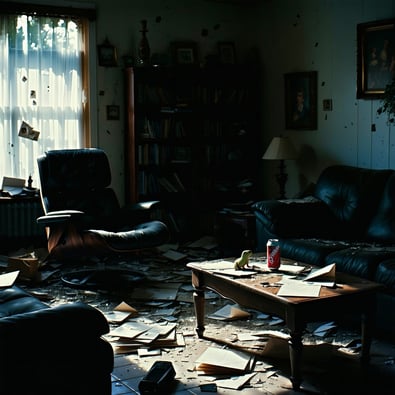Standing in line at Far and Dotter marijuana dispensary in Elkton, Maryland, you see an array of people come through the dispensary line.
A young woman in Lululemon. A young man in camo and cowboy boots. An older gentleman with a cane. A middle-aged woman with a limp. A man in a veterans’ cap. When you stand in line long enough, you’ll notice a trend. None of the customers coming through are fitting the typical stereotype of a “stoner.”
Legalized marijuana use in Maryland went into effect on July 1, 2023, after voters approved a ballot referendum in the 2022 general election to allow use of cannabis by adults 21 and over for “adult use” of cannabis. During the 2023 legislative session, the Maryland General Assembly passed legislation that provided a framework for implementing legal adult-use sales, including a licensing and taxation framework. Passed on May 3, 2023, the Cannabis Reform Act authorized existing licensed dispensaries to convert their licenses for dual medical and adult-use sales on July 1, 2023, and also authorized the Maryland Cannabis Administration to issue additional grower, processor, and dispensary licenses, and new incubator licenses over two licensing rounds.
In the nearly two years since adult use of marijuana became legal in Maryland, the industry has had an undeniable impact on the state and now includes two dispensaries in Cecil County. This new industry has opened doors, not only for the state and county but for those who choose to partake.
“If you sit in a dispensary long enough, you’ll see that your median age is probably in the forties, and an overwhelming amount of the people are well above 40,” said Wendy Bronfien, co-founder and chief brand officer for Curio Wellness. “Most people are buying to alleviate something or feel a different way, but they’re not chasing the THC component of the plant.”
Bronfein started Curio Wellness with her father in 2014 when they learned Maryland would be starting a medical marijuana program. In 2016, Curio earned their license to begin growing and selling medical marijuana with both their growing location and first Far and Dotter dispensary located in Baltimore County. They have since expanded the business into adult use marijuana and opened two more Far and Dotter dispensaries, one in Elkton where Pharmkent was previously located, and another location in Baltimore County.
Bronfien shares that the Elkton location is “always buzzing,” seeing more activity than other locations.
“Even the days of the week that tend to be quieter - just holistically from a dispensary standpoint – we are still pretty busy here,” she said. “I think a lot of that has to do with the proximity to other states and the nature of those programs, whether they only have medical or even if they have adult use. If their product mix isn’t as robust as Maryland, or if their prices aren’t as attractive as Maryland’s, it draws people across the line.”
Therapeutic use
Elkton is located near the border of both Delaware and Pennsylvania, but while Delaware allows adult use, Pennsylvania only allows medical marijuana. While dispensaries can sell to anyone over the age of 21, transporting across state lines remains illegal.
No matter where they may be coming from, Bronfien believes the people who are seeking out adult use marijuana are doing so for their well-being rather than for the explicit purpose of getting high.
“A majority of people who are shopping adult use are shopping therapeutically and we’ve done that research to confirm it,” she said. “There may be people who are using it from a social buzz perspective, but the overwhelming reasons for adult use consumers that purchase marijuana from a dispensary are to deal with mood, stress, sleep, pain and general forms of relaxation.”
Although many may be using the products therapeutically, they are still buying the product as adult use, which comes with limitations. In Maryland adult use marijuana is capped at one and a half ounces of cannabis flower, 12 grams of concentrated cannabis, or a total amount of cannabis products that does not exceed 750 mg THC. Conversely medical marijuana purchase limits are higher, have no potency restrictions and they do not pay the nine percent tax that adult use is subjected to.
With limitations in place, some users may see reasons to continue buying illegally from dealers to skirt around legal restrictions and pricing. One anonymous Cecil County smoker shared that in the wake of legalization, she and her partner were concerned about the increase in pricing they would see when purchasing legally. Now, cost concerns pale in comparison to the benefits of purchasing the drug legally.
“I felt like I trusted the dealers themselves, but I didn’t trust where they were getting it from so, I didn’t know if it was as potent as they said it was, and I didn’t know if it would be laced – luckily that never happened,” she said. “I definitely prefer the dispensary. It can be a little bit more expensive, but to me it’s worth it.”
Big business in Maryland
While customers can feel the pinch of a nine percent tax on their purchases from a dispensary, it seems to be working for the state. Since launching in 2023, state-licensed marijuana retailers have sold more than $1.1 billion in medical and recreational marijuana. Cannabis sales generated nearly $73 million in sales tax revenue for Maryland in 2024, and the industry generated $94.5 million in total sales for January 2025 alone. Revenue from sales is divided among different funds in the state, with 35 percent of it funneled to the Community Reinvestment and Repair Fund; five percent to Maryland counties; five percent to the Cannabis Public Health Fund; five percent to the Cannabis Business Assistance Fund and the remaining balance directed to the state general fund.
Adult use cannabis will soon be getting even more expensive however, with an increase in sales tax to 12 percent. While this will further increase funds for the state, it also raises fears that users may return to illegal means of obtaining weed if prices are out of reach. Bronfien advised against this, citing safety concerns and limited access.
“I think it’s quite foolish, because if you’re that passionate about consuming the product, I don’t know why you wouldn’t walk into a store where you would have so much variety and so much
choice and know that you’re consuming something that is safe,” she said. “We would love to see more people reinstate their goals for medical use, because there’s plenty of people on the adult use side who are purchasing through that lens. They have more access to products, and they wouldn’t feel the tax increase if they were to make that choice.”
While an anonymous source echoed Bronfein’s statements that many users partake for health reasons and that there is an incentive to switch to medical use, she also provided a cautionary tale.
Before she lived in Cecil County, she began smoking weed in Pennsylvania when she was 16, starting at once a week before increasing to daily use. She shared that while her current usage is primarily to sleep and occasionally for the experience of getting a high, she can see how a “dependency can be formed.”
“I went through a period of time where I was not able to eat if I didn’t smoke, so I had to cut back,” she said. “I think [the cannabis industry] definitely needs to warn people that it marijuana can become addictive depending on your personality and what you’re going through at the time. People just think it’s nothing but at the end of the day, it is a drug and it’s natural and it definitely helps, but there does need to be more warnings.”
Ultimately, although she has gone through phases in her near decade of marijuana experience, responsible usage of marijuana - especially from a dispensary - has been the most reliable and positive experience for her in her consumption of the drug. From her earlier days as a self-described stoner, she shared her feelings on the stereotypes facing consumers today.
“I think the stereotype of the marijuana user is that of being lazy, unmotivated and tired, but I don’t think that’s accurate,” she said. “It can have that effect on some people, but it’s just about knowing yourself and self-monitoring the proper dosage.”
‘It’s about living your best self’
On the business side, facing stereotypes is also something Bronfein has experience dealing with. She said that facing stigmas and stereotypes within the medical community is a major hurdle.
“We have to be able to try and find ways to give [medical professionals] information in the way they know it, because that’s how they’re trained to accept it. The more that it can be normalized, the more adoption we’ll see,” she said. “The University of Maryland pharmacy school created the cannabis master’s program and I think that’s been a huge piece. It draws people internationally and they give such a depth of knowledge on this category.
I think it’s really instrumental and having a major institution like that really helps to validate the industry.”
While the legal cannabis industry is still in its early days in Maryland, and restrictions and stigmas still persist, the potential for the industry to thrive in the state and in Cecil County remains for those who believe in it. For those in Cecil County who still may hold on to those stigmas or conversely, those looking to try something new, Bronfien shared what she wants community members to know.
“It’s about understanding that there are really great products available in the dispensary that truly help people and help them achieve a great quality of life,” Bronfien said. “This really isn’t about getting high. It’s about living your best self.”




.jpg?width=550&height=395&name=jeff-w-tgC4LX_8MIA-unsplash%20(1).jpg)
